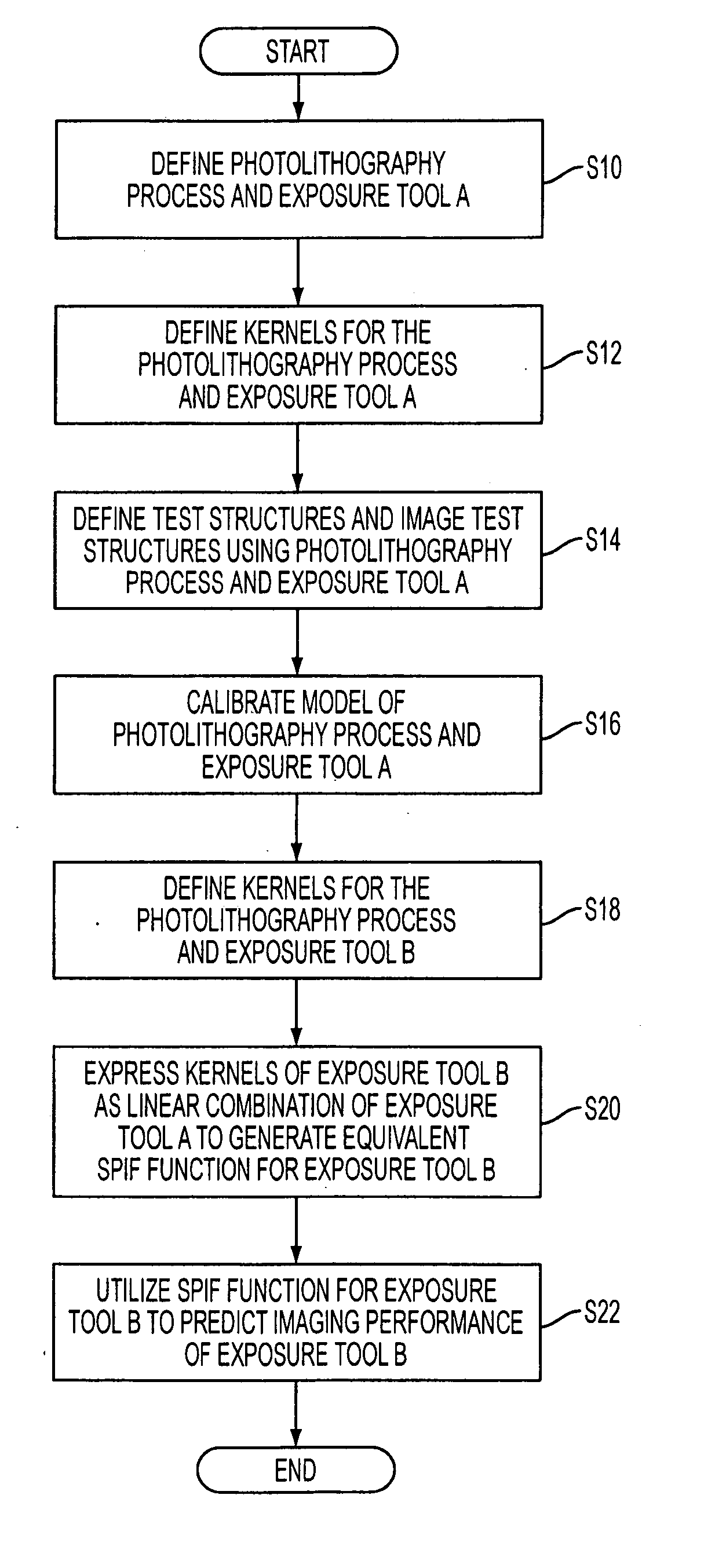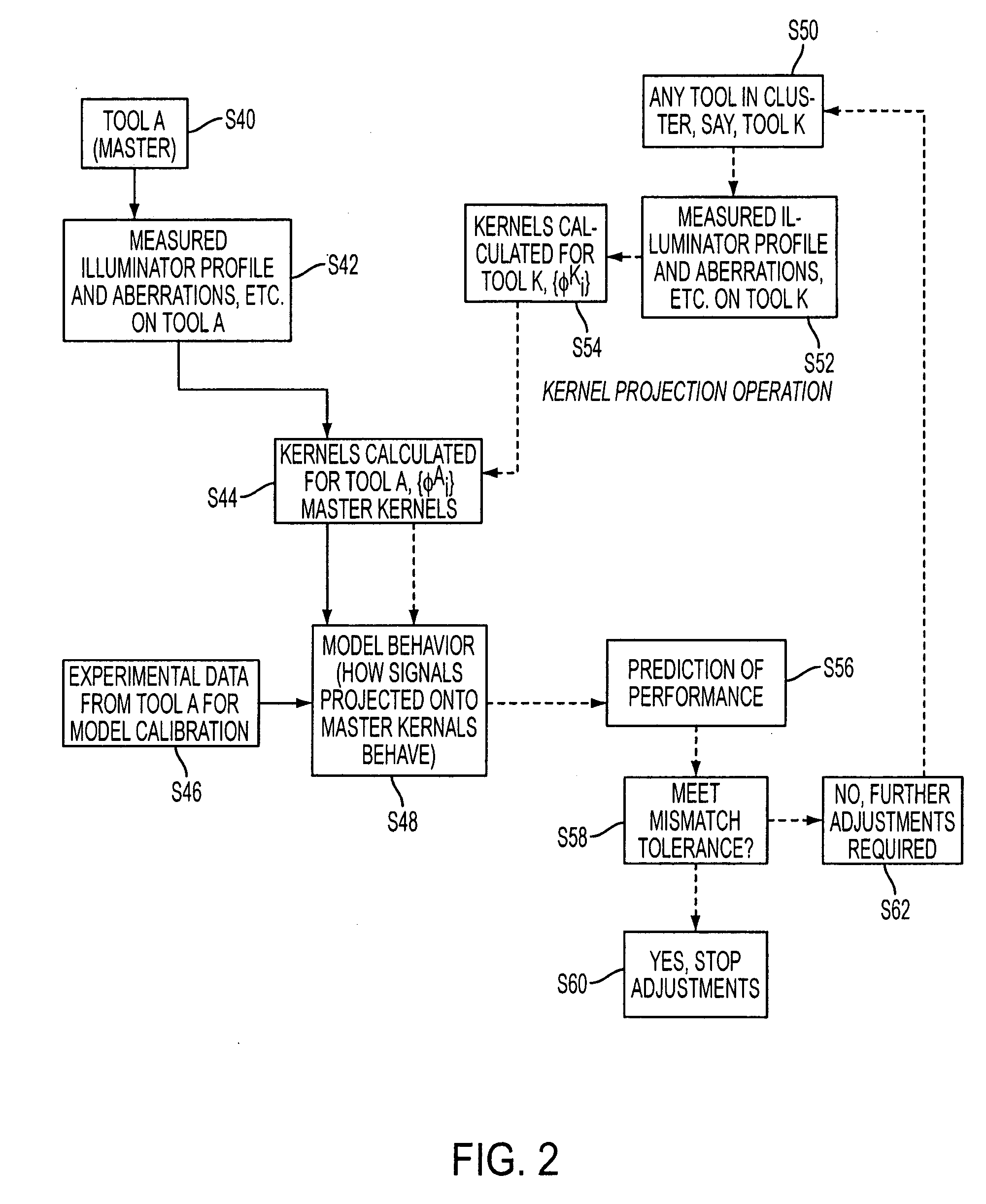Method of predicting and minimizing model OPC deviation due to mix/match of exposure tools using a calibrated eigen decomposition model
a decomposition model and model technology, applied in the field of aerial images, can solve the problems of wasting time and effort in the design process, unable to find the optimal photolithography process condition for each layer, and no known method of allowing a model calibrated on a first exposure tool
- Summary
- Abstract
- Description
- Claims
- Application Information
AI Technical Summary
Benefits of technology
Problems solved by technology
Method used
Image
Examples
Embodiment Construction
[0028] Disclosed herein is a method and apparatus for allowing a model, which is calibrated in conjunction with a first exposure tool and is capable of simulating the imaging performance of the first exposure tool, to be utilized to generate a second model capable of simulating the imaging performance of a second exposure tool without having to perform a calibration of the second model and second exposure tool. It is noted that the exemplary method detailed below utilizes an eigen function decomposition model (referred to as an Eigen Decomposition Model, or EDM), for modeling the performance of the imaging process. However, it is also possible to utilize the methods of the present invention with other types of models.
[0029] Prior to discussing the method of the present invention, a brief discussion regarding the generation of an eigen decomposition model is presented. A more detailed description of the generation of the eigen decomposition model can be found in U.S. patent applicat...
PUM
| Property | Measurement | Unit |
|---|---|---|
| wavelength | aaaaa | aaaaa |
| wavelength | aaaaa | aaaaa |
| wavelength | aaaaa | aaaaa |
Abstract
Description
Claims
Application Information
 Login to View More
Login to View More - R&D
- Intellectual Property
- Life Sciences
- Materials
- Tech Scout
- Unparalleled Data Quality
- Higher Quality Content
- 60% Fewer Hallucinations
Browse by: Latest US Patents, China's latest patents, Technical Efficacy Thesaurus, Application Domain, Technology Topic, Popular Technical Reports.
© 2025 PatSnap. All rights reserved.Legal|Privacy policy|Modern Slavery Act Transparency Statement|Sitemap|About US| Contact US: help@patsnap.com



